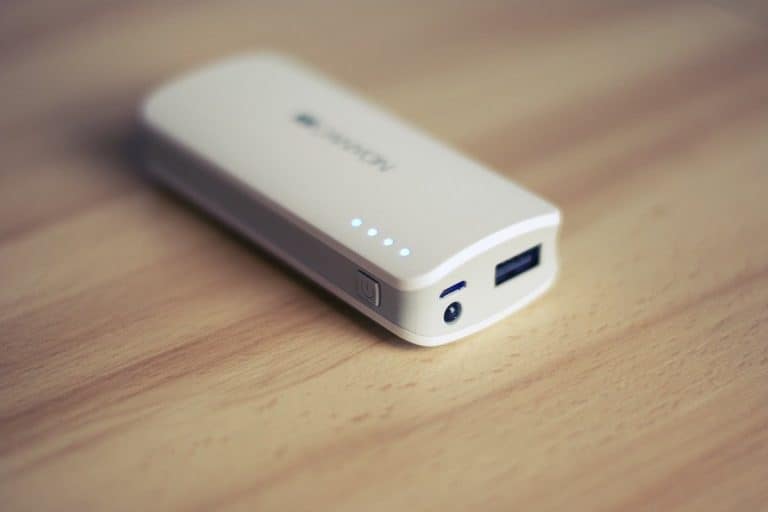Can Portable Power Banks Damage Cell Phones?
Power banks will not damage your phone battery. Make sure the power bank is purchased from a legitimate manufacturer and does not discharge a voltage higher than your phone battery. Good power banks will not damage the battery. It’s essential to understand the capacity and limitations of power banks as well as which model is right for your phone and your specific charging needs.
In this day of constant connectivity, most of us have at least some need to keep our cellphones charged even when unwinding at the campground, out on a boat or hiking in the wilderness. But if you take your phone somewhere without power for more than a day, one way to keep it going is to use a power bank.
Power banks can be an excellent option for anyone who often finds themselves unable to reach a power source. Therefore, it’s helpful to know what kind of power bank you should have for your phone and how they compare as a sustainable energy source.
How Do Power Bank Batteries Work?
Essentially, power banks are portable batteries that use either a lithium-ion or lithium-polymer battery. The technology uses a convertor to maintain a constant output voltage (5V) no matter the actual battery voltage.
Each component must perform correctly to ensure your power bank does not malfunction.
These days, they have evolved to become relatively lightweight, easily transportable, and highly effective when your phone is low on juice.
Power banks range vastly in size, with some models even able to jump-start a car. However, for mobile phones, the power bank’s charging capacity is usually geared towards smaller devices powered by USB (What You Need to Know About Solar Panel Phone Chargers.)
Generally, power banks should always be kept out of direct sunlight and be able to charge in a well-ventilated space. This is particularly important if using your power bank outdoors, where it may be prone to overheating.
Power Bank and Cell Phone Battery Capacity
Consumers looking to purchase a power bank are often confused by the varying capacities currently available on the market. Capacity is measured in milliamp-hours (mAh). If you want to use the power bank to charge your mobile phone, you need to weigh up the phone’s mAh versus the power bank’s mAh.
Usually, the lowest milliamp-hour for a power bank is 1000mAh. A power bank with this capacity can charge a phone for about an hour. However, this will not charge the phone fully as the capacity of an average phone battery is more than double this size.
The typical mobile phone battery had grown substantially over the last few years. Smartphone technology has demanded an increase in capacity. As such, the average capacity of a phone battery is around 2500mAh. And this is expected to rise over the next few years as technology develops.
If you wish to charge a 2500mAh phone battery, you need a power bank that matches this or preferably has a higher capacity.
The trick with power banks is that the actual number of charges a power bank can give based on its mAh tends to be lower than expected. As such, a power bank, which you may expect to provide you with four full charges, may only in reality offer three.
Choosing the Right Power Bank for Your Phone
With smartphone batteries now internally built into the device, it is not easy for people to replace the battery by simply buying a new one. This means that protecting that battery has become even more critical.
First, locate your mobile phone’s battery size and any related charging specifications. You can usually find this information printed directly on the phone’s battery or charger.
You need to be aware of two things, namely, the phone’s mAh and the phone’s output voltage. Again, you need to purchase a power bank with a higher mAh than your phone if you want to get a full charge. Ideally, you want more than one charge out of your power bank, which means you need the highest mAh you can afford.
In terms of the power bank voltage, you need to ensure that the power bank has an output voltage equal to or greater than the phone’s output voltage. By doing this, you will avoid any damage to your phone’s battery.
While the input voltage of the power bank must always be lower than the phone’s to avoid battery damage, the input voltage is five volts for mobile phones and most USB powered devices. Power banks are now available with a “power cut” feature, which means that, should there be a short circuit, your phone will not be damaged.
To prevent damage to your phone’s battery, it is always advisable to purchase a power bank from a trusted manufacturer.
Advantages and Disadvantages of a Power Bank
As with all pieces of technology, there are advantages and disadvantages to owning a power bank, which we outline below.
Pro: Say Goodbye to Battery-Anxiety
No matter how hard mobile phone companies strive to achieve a long-lasting battery, the running power of the phone, as well as the apps, will always cause the battery to drain.
That’s where power banks come into play. They can ensure that you never have to worry about running out of juice again.
Pro: Charge on the Go
For travelers, power banks make the most sense. You may find that you seldom have access to a charger because you are outdoors for work or leisure. Power banks enable you to charge your phone wherever you are, be it out hiking (thruhiker.co) or in the middle of a raft in the ocean.
Pro: Charge Numerous Devices at Once
Depending on the model and the size of your power bank, you can charge numerous devices at one time. Any USB device will charge on a power bank. This includes mobile phones, tablets, navigational systems. This can be great if you are out camping, and you wish to charge your mobile phone, camping light, torch, or camping fan.
Pro: Affordable and Available
Power banks have never been more available and affordable than they are now. You can easily order them off Amazon or purchase them from any tech-store. They range in price based on the specifications.
Power banks with larger capacities and more ports will be more expensive than smaller power banks with only a single port. Depending on your budget, power banks range from $10 to $120. Additional features such as fast-charging mode will also affect the affordability.
Con: Power Banks Have a Lifespan
Lithium batteries are the most frequently used batteries in electronic devices. This is because they have a high energy density and can charge our devices much more effectively than any other kind of batteries.
However, the disadvantage of lithium batteries is that they tend to lose their capacity to be recharged over time. This means that every time you charge them, they lose a little more capacity until, eventually, they are unable to hold any charge. As such, your power bank will eventually need to be replaced.
Con: Quality
The quality of the power bank can be a cause for concern. Well-known brands and manufacturers can usually be expected to deliver quality goods, which is why it’s vital to make sure you purchase your power bank from a reputable supplier.
Poor-quality power banks are at risk of overheating, exploding, catching fire, and short-circuiting. This also makes them a potential risk to your phone battery. Battery life is significantly shortened when it overheats.
Organizations such as the Consumer Product Safety Commission (CPSC) work to monitor power bank production and to help recall any malfunctioning products on the market.
Even with such organizations in place, it always helps to be savvy with your purchases, so make sure you do your research.
Con: Speed
The truth is that most power banks take a while to charge, and the bigger their capacity, the longer they take. A power bank can take anything between 2 hours to 10 hours to recharge, depending on the capacity.
Some power banks have a pass-through charging feature, which I discuss in “Can You Charge a Power Bank while Using It?”
Con: Size
The design of power banks has evolved significantly over the years. However, due to their very nature, they can be quite bulky. Power banks with smaller capacities tend to be smaller in size. However, you will still find it challenging to hold them in your hand if you are on the move.
Final Thoughts
Provided that you purchase your power bank from a reputable manufacturer and adhere to your mobile phone’s voltage capacity, then there is no reason a power bank should have any kind of negative impact on your phone’s battery.
Power banks are a great investment for someone who finds themselves in need of a portable battery that is both affordable and convenient.







